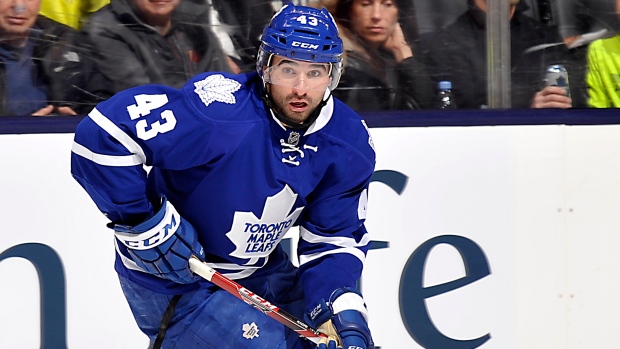Oct 4, 2016
Look for Leafs to have better shooting luck
Toronto’s lowly shooting percentage last year was driven by decent offensive forwards suffering a dramatic downtick in their conversion rates, Travis Yost writes
By Travis Yost

If there’s one team hoping for a bit more shooting luck this season, it’s the Toronto Maple Leafs.
The Leafs, in total rebuilding mode in year one of the Mike Babcock era, weren’t expected to compete for a playoff berth in 2015-16. They fell well short of the mark, racking up just 69 points over the course of the season.
Their year wasn’t atypical of most basement dwellers, though. Structurally, Babcock’s team played with composure and tenacity. There weren’t many games where the Maple Leafs were totally run out of the building. But what the Leafs made up for in respectable system adherence, they lost in sheer talent disparities. Babcock has said as much himself, giving this quote to the media just this past weekend:
“Last year, we could check the puck back, but when we got the puck we didn’t know what to do with it.”
Two numbers stand out from last season. The first: 50.5 per cent. That was the percentage of shots in favour of Toronto through 82 games at 5-on-5 – just above breakeven and, historically speaking, indicative of a quality hockey team. The second: 6.4 per cent, or Toronto’s conversion rate at 5-on-5.
Make no mistake, that’s a lowly shooting percentage. Being more than a point below league average meant that the Leafs shot differential advantage would be at least partially offset by the relative scarcity of those shots actually finding the back of the net. In short: the process may have been there, but the results certainly weren’t.
Babcock seems optimistic that an influx in talent will pay dividends here, with players like Auston Matthews and Mitch Marner joining the fold. I wonder how much of a potential Leafs bounce-back here will simply be driven by an expected favourable regression toward the league average for the many Leaf skaters who went through shooting droughts last season.
I don’t think it’s completely random that the Leafs’ shooting touch dissipated last season, but it’s hard to ignore the fact that the team was victimized by a bunch of not-so-bad shooters suddenly struggling. Consider just the list of forwards below – all forwards who played last season for the Leafs and should see significant time this season:
That’s a lot of goals left on the table. Outside of a couple of outliers (let us not forget the mind-blowing goal-scoring bender Leo Komarov went on last year) most of these Leafs forwards saw a dramatic downtick in their conversion rates. The players hit hardest were down the middle of the lineup, with centres Tyler Bozak and Nazem Kadri taking considerable steps backward.
So, why do I think that part of Toronto’s improvement on the shooting percentage front will come from mere movement toward the league average versus the talent influx experienced from off-season roster changes? Well, consider the below table – a list of all teams who finished with above-average possession numbers and lowly shooting percentage numbers, and how their team looked in the following year by both metrics:
There are 21 teams in this group by our criteria, and guess what? Above average possession teams remained above average possession teams, with 86 per cent continuing to outshoot their competition over the course of a season.
Those shooting percentage struggles, though, seemed to totally disappear. Our group, which shot 6.6 per cent (just a shade above what the Leafs shot last season), shot 7.8 per cent in the following year. All of these teams were one standard deviation (or worse) from a shooting percentage standpoint in the given year. In the following year, 86 per cent of the teams would be considered average or better shooters, with only the 2014-15 Carolina Hurricanes, 2014-15 Chicago Blackhawks, and 2011-12 San Jose Sharks repeating.
The takeaway is that there’s much more reason to be bullish about a strong structure/weak shooting team than vice versa, and the numbers prove that out. I’m not sure the Leafs will have enough offensive weaponry to chase down a playoff spot this season, but based on the above, I’d be stunned if they weren’t substantially more competitive this year – trading ‘competitive on the shot clock’ for ‘competitive on the goal clock’, and watching that translate into wins.

